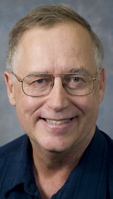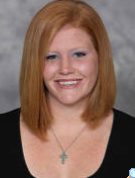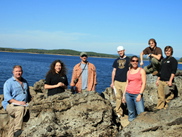Need a Career? Check Out Geoscience
A report in the May 11 online edition of Nature magazine predicts an expected boom in job prospects for graduates of geoscientific disciplines. The article quotes Professor Jeff Gaffney, saying job prospects can be enhanced if students expand their knowledge of other disciplines to better communicate with future team members.
 “Devising solutions to many of today’s most pressing problems will require knowledge spanning several fields,” the article quotes Gaffney.
“Devising solutions to many of today’s most pressing problems will require knowledge spanning several fields,” the article quotes Gaffney.
The term “geoscientist” includes a number of scientific disciplines— geologists and geophysicists who study the composition, structure, and other physical aspects of Earth and its geological past and present, searching for natural resources; environmental scientists who help to preserve and clean up the environment; atmospheric chemists like Gaffney; oceanographers, and deep-Earth mineralogists.
Gaffney said UALR students are encouraged to broaden their knowledge beyond discipline of their major, with internship opportunities and research mentors outside their department.
Recent UALR graduate Brenda Gannon, a native of St. Peters, Mo., who came to UALR on a swimming scholarship, majored in mathematics, chemistry and Spanish. She worked as an intern at the Central Arkansas Water Authority and worked with Dr. Forrest Payne in UALR’s Department of Biology on some of his research projects.
“The interdisciplinary training served her well. She was accepted into the UAMS Environmental Toxicology Ph.D. program,” Gaffney said.
Another example is Nick Rosenau, who graduated in 2008 with a double major degree in earth science and chemistry. He worked with Gaffney’s research group on atmospheric chemistry and also did work with professors in the Department of Earth Science, whose programs encompass geology, paleontology, oceanography, geospacial imaging, and more.
“He learned a lot about the use of stable isotopes and their applications,” Gaffney said. “He is now pursuing graduate studies at Southern Methodist University in paleoclimates.
The Nature article said geoscience is becoming more technical, especially in certain subdisciplines such as atmospheric chemistry and climate change, where computer modeling has become a mainstay. A strong background in mathematics, particularly in statistics and in computer simulation techniques, is needed to help researchers understand everything from ocean currents to minerals deep in the Earth’s mantle.
“Many earth-science systems are very complicated,” Gaffney said in the article. “Researchers need to understand not only the mathematics of the models they’re using but the basic fundamentals of the physical and chemical processes that they’re trying to simulate.”
And that’s especially true for models used in analyses that could have substantial effects on public policy, such as those related to climate change or to the potential costs and benefits of alternative fuels.
 The Nature article said that despite the recent economic downturn, job prospects for geoscientists are excellent and are set to get even better, citing Bureau of Labor Statistics that suggest that in 2018 there will be some 323,000 positions for geoscientists in the U.S. – about 23 percent more than in 2008 – as Baby Boomer scientists retire, the world expands its search for natural resources, and seeks to restore and repair damage to land, air, and water
The Nature article said that despite the recent economic downturn, job prospects for geoscientists are excellent and are set to get even better, citing Bureau of Labor Statistics that suggest that in 2018 there will be some 323,000 positions for geoscientists in the U.S. – about 23 percent more than in 2008 – as Baby Boomer scientists retire, the world expands its search for natural resources, and seeks to restore and repair damage to land, air, and water
“If you have a degree, you’d have to be dead or dead lazy to not get a job (in the field),” the article quotes Christopher Keane, director of technology and communications for the American Geological Institute.